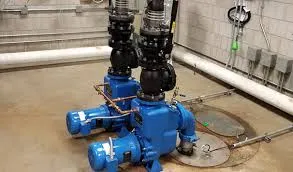Pashto
- Afrikaans
- Albanian
- Amharic
- Arabic
- Armenian
- Azerbaijani
- Basque
- Belarusian
- Bengali
- Bosnian
- Bulgarian
- Catalan
- Cebuano
- Corsican
- Croatian
- Czech
- Danish
- Dutch
- English
- Esperanto
- Estonian
- Finnish
- French
- Frisian
- Galician
- Georgian
- German
- Greek
- Gujarati
- Haitian Creole
- hausa
- hawaiian
- Hebrew
- Hindi
- Miao
- Hungarian
- Icelandic
- igbo
- Indonesian
- irish
- Italian
- Japanese
- Javanese
- Kannada
- kazakh
- Khmer
- Rwandese
- Korean
- Kurdish
- Kyrgyz
- Lao
- Latin
- Latvian
- Lithuanian
- Luxembourgish
- Macedonian
- Malgashi
- Malay
- Malayalam
- Maltese
- Maori
- Marathi
- Mongolian
- Myanmar
- Nepali
- Norwegian
- Norwegian
- Occitan
- Pashto
- Persian
- Polish
- Portuguese
- Punjabi
- Romanian
- Russian
- Samoan
- Scottish Gaelic
- Serbian
- Sesotho
- Shona
- Sindhi
- Sinhala
- Slovak
- Slovenian
- Somali
- Spanish
- Sundanese
- Swahili
- Swedish
- Tagalog
- Tajik
- Tamil
- Tatar
- Telugu
- Thai
- Turkish
- Turkmen
- Ukrainian
- Urdu
- Uighur
- Uzbek
- Vietnamese
- Welsh
- Bantu
- Yiddish
- Yoruba
- Zulu
Telephone: +86 13120555503
Email: frank@cypump.com
Nov . 11, 2024 02:09 Back to list
Understanding the Functionality of Sewage Ejector Systems in Waste Management Operations
Understanding Sewage Ejector Systems An Essential Guide
Sewage ejector systems play a crucial role in managing wastewater, especially in properties located below the level of the municipal sewer line. This innovative system is designed to handle the transportation of sewage and wastewater, ensuring that it is effectively pumped away from homes and businesses to treatment facilities. Understanding how these systems work, their components, benefits, and maintenance requirements is essential for anyone considering a sewage ejector system installation.
What is a Sewage Ejector System?
A sewage ejector system is a wastewater management solution designed to lift and transport sewage from lower elevations to a higher elevation, typically where the main sewer line is located. These systems are essential in places such as basements, where gravity drainage is not feasible. The operation typically involves collecting sewage and wastewater in a holding tank and then using a pump to propel it upward through a discharge pipe.
Key Components of a Sewage Ejector System
1. Holding Tank At the heart of the system, the holding tank collects wastewater from various sources, including sinks, toilets, and laundry facilities. It is designed to withstand the corrosive nature of sewage.
2. Ejector Pump This is the critical component that pumps the sewage from the holding tank. Ejector pumps are robust and designed to handle solids and debris, ensuring that waste is transported efficiently without blockage.
3. Check Valve This valve prevents backflow of sewage, ensuring that once the waste has been pumped away, it cannot return to the holding tank.
4. Discharge Pipe This pipe carries the sewage from the ejector pump to the municipal sewer line or septic system, allowing for safe disposal of wastewater.
5. Float Switch This device monitors the water level within the holding tank. When the water reaches a certain level, the float switch activates the ejector pump to start working.
sewage ejector system

Benefits of Installing a Sewage Ejector System
1. Prevents Backup One of the primary benefits of a sewage ejector system is its ability to prevent sewage backup in basements and lower-lying areas, which can lead to significant property damage and health hazards.
2. Versatility These systems can be used in various settings, including residential homes, commercial buildings, and even outdoor fixtures such as swimming pools and garage kitchens.
3. Cost-Effective Solution By installing a sewage ejector system, homeowners can avoid expensive plumbing modifications necessary for gravity-fed drainage systems.
4. Improved Hygiene By effectively managing wastewater, sewage ejector systems contribute to maintaining a sanitary environment, significantly reducing the risk of disease and unpleasant odors.
Maintenance Considerations
Proper maintenance of a sewage ejector system is essential to ensure its longevity and functionality. Regular inspections should include checking the pump, ensuring the float switch is operational, and examining the discharge pipe for any signs of blockage. Keeping the holding tank clean and free from debris can prevent malfunction and costly repairs.
Homeowners should also be aware of what can and cannot be flushed down toilets or drains to avoid clogs and damage to the ejector pump. Items such as paper towels, feminine hygiene products, and food waste should never be introduced into the sewage system.
Conclusion
Sewage ejector systems offer a reliable solution for managing wastewater, particularly in situations where traditional gravity drainage is not an option. By understanding their components, benefits, and maintenance requirements, property owners can make informed decisions about wastewater management. As urban development continues to expand and properties are constructed in challenging locations, the importance of sewage ejector systems will only increase, making them a fundamental aspect of modern plumbing infrastructure.
-
Custom Drilling Mud and Slurry Pump Supplier - High Efficiency, Tailored Solutions
NewsJun.10,2025
-
Supply Vertical Submersible Sewage Pump High-Efficiency WQ/QW Pumps Supplier
NewsJun.10,2025
-
Premium Sewage Ejection System & Pumps Efficient Waste Removal
NewsJun.09,2025
-
Premium Wholesale Slurry Pump Impellers Durable & Efficient Slurry Handling
NewsJun.09,2025
-
Top Sewage Pump Companies Durable Industrial Solutions for Efficiency
NewsJun.09,2025
-
Heavy Duty Slurry Pumps - OEM High Performance & Bulk Wholesale
NewsJun.09,2025










